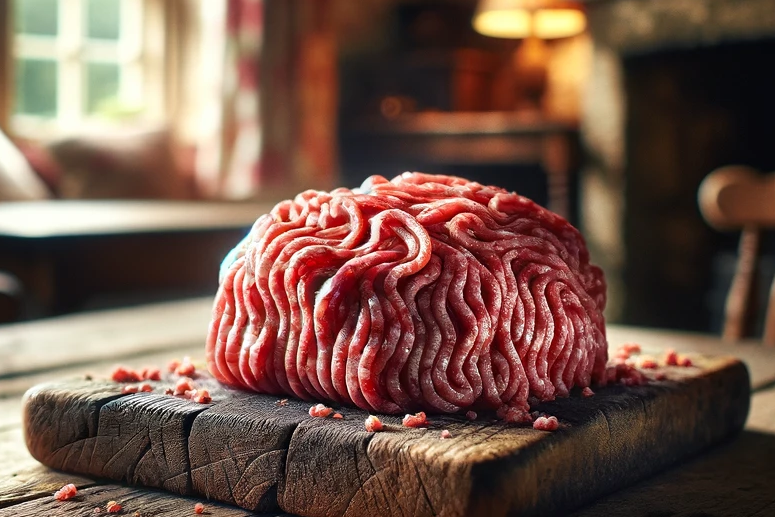Minced beef

Ground beef, often used in everyday life as a basic ingredient in many popular human dishes, can also play a role in our dogs' diet. However, as with any food we offer our four-legged friends, it's important to weigh up the pros and cons carefully. In this comprehensive article, we explore what ground beef actually is and how it can affect the health and well-being of dogs. We highlight both the nutritional benefits and the potential risks to give you an informed perspective.
What is minced beef?
Ground beef, also known as minced beef, is minced beef obtained by grinding pieces of meat. It is known for its versatility in the kitchen and provides a rich source of protein, essential fatty acids, vitamins and minerals.
Benefits of ground beef for dogs
High protein content
Proteins are the building blocks of life and are essential for growth, tissue repair and maintaining muscle mass in dogs. Ground beef is an excellent source of protein that can help meet your dog's daily requirements.
Contains important nutrients
Aside from protein, ground beef also contains important nutrients such as iron, zinc and B vitamins that can contribute to your dog's overall health, including supporting the immune system and promoting healthy coat growth.
Easily digestible
When prepared properly, ground beef can be easily digested by dogs, making it a good option for pets with sensitive stomachs or older dogs.
Disadvantages and risks
Potential bacterial contamination
Raw ground beef can be contaminated with harmful bacteria such as salmonella and E. coli. These bacteria can pose a health risk not only to the dog but also to humans, especially if hygiene practices are not strictly adhered to.
High fat content
Depending on the cut, ground beef can have a high fat content. Too much fat in a dog's diet can lead to obesity and associated health problems, including heart disease and diabetes.
Risk of an unbalanced diet
A diet that relies too heavily on ground beef or another single protein can lead to an unbalanced diet. Dogs need a varied diet that contains all the essential nutrients in the right proportions.
Balance and caution are key
Ground beef can be a nutritious addition to your dog's diet, provided it is used responsibly and in moderation. The potential health benefits, including the high protein content and essential nutrients, make it an ingredient worth considering. However, the risks, particularly the risk of bacteria and the possibility of an unbalanced diet, should not be underestimated. It is important to handle and cook ground beef safely to minimize the risk of contamination. It should also only form part of your dog's varied diet to ensure a balanced intake of all the necessary nutrients. Ultimately, your dog's welfare is most important, and careful consideration and planning of their diet can help to promote their healthy and happy life.
If you notice any signs of hypersensitivity or poisoning in your dog, you should see your vet immediately. We are not a substitute for a vet, but we try to be as accurate as possible. Every dog reacts differently and we recommend you get a second opinion or consult your vet if in doubt.
Stay healthy and take good care of your four-legged friend!😊
Similar to Minced beef
Ground poultry, also known as poultry mince, is made from shredded meat from chickens, turkeys or other types of poultry. It can come from different parts of the poultry, including breast, thighs...
Chicken mince is minced meat from chickens, usually from the breast or thigh. It can be processed raw or cooked and has a fine or coarse consistency. Chicken mince is often mixed with spices, herbs...
Minced lamb, also known as lamb mince, is minced meat obtained from various parts of the lamb. This meat is usually put through a mincer to achieve a fine, uniform texture. Lamb mince is widely used...
Minced pork, also known as pork mince, is obtained by grinding pork. It can come from different parts of the pig and can vary depending on its fat content. In the human diet, it is a popular...



